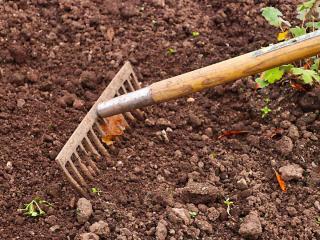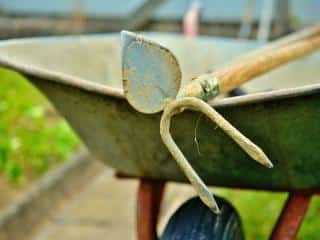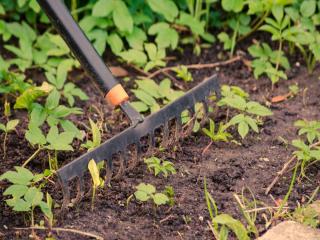

Often overlooked, hoeing is nonetheless an important maintenance action. Whether in growing beds and along borders in ornamental gardens, or among rows of veggies in the vegetable patch, it’s crucial to maximize growth and water. Discover why it’s crucial to hoe, and how to do it.
According to the dictionary, hoeing is: “A form of maintenance for crops that involves loosening the surface layer of soil, done with a hoe or a toothed tool.” In simple terms, to hoe means to break up the crust that forms on the soil surface to keep it crumbly.
This crust problem often occurs with clay and loamy soils. Particles in this type of soil are so fine, that when heavy rains fall, a beating crust forms. This crust is nearly completely waterproof and must be broken to allow water to re-enter the soil.
You might find this interesting:
There are many reasons to hoe. Indeed, breaking the soil crust triggers many benefits:
 Enhance water penetration into the soil during rain or watering. This prevents runoff that stops water from reaching roots. Gardeners often say that a “one good hoeing is worth two waterings“.
Enhance water penetration into the soil during rain or watering. This prevents runoff that stops water from reaching roots. Gardeners often say that a “one good hoeing is worth two waterings“.
Also known as “old 3 tooth” by gardeners, its points ease soil penetration for a simplified hoeing. Its main drawback is its lower weed control efficiency: roots are not cut and can end up in a dirt clod, which might be enough for their survival.
Its work is more precise for hoeing a bed with borders, for instance. It even allows for soil lifting for a nicer result.
The main flaws of the spading fork are:
More versatile than the first two tools, the garden hoe allows both for cutting weed roots and loosen the soil surface. Despite this, work remains rougher and its use is likely to be reserved for the vegetable patch rather than the entire garden.

It is not necessary to stir the soil too deeply to hoe. A few inches are enough to be effective.
Finally, for sharp tools such as the hoe or the garden hoe, make sure they are sharpened before using them.